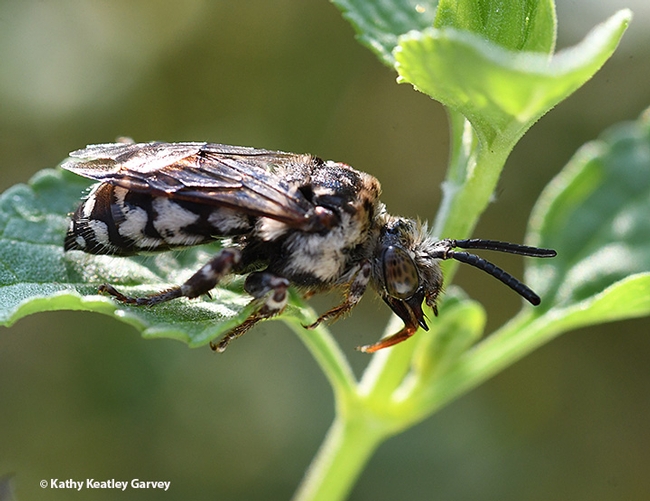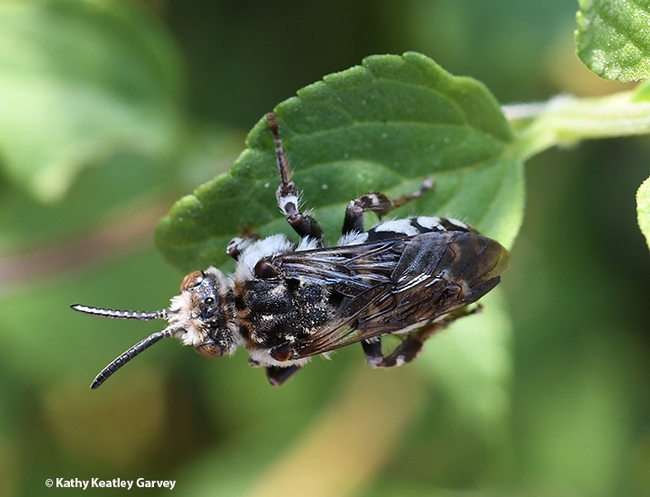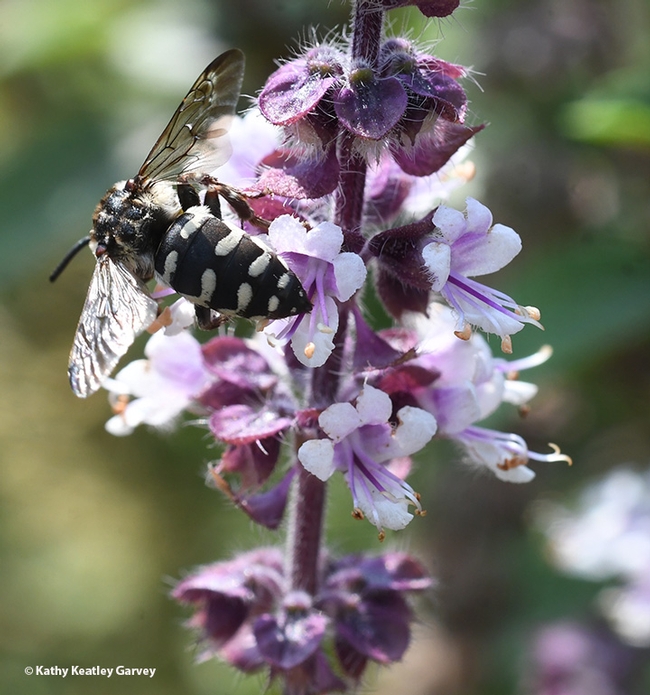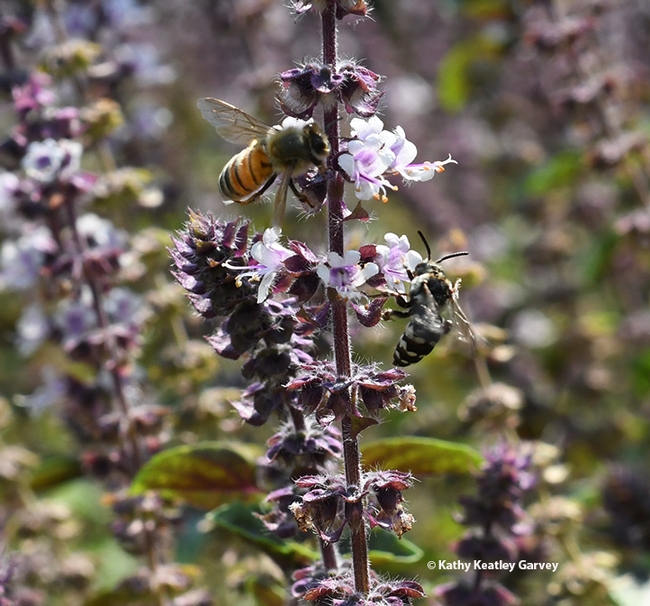Ever seen a cuckoo bee?
They're also called parasitic bees or "kleptoparasites" or "cleptoparasitises."
They cannot carry pollen (no apparatus) and do not construct their nests. They lay their eggs in the nests of their hosts and then eat the food meant for the hosts. Or as the late Robbin Thorp, distinguished emeritus professor of entomology at UC Davis, told us: "They eat the provisions, a pollen ball meant for the host offspring, and kill and eat the host larvae."
We've been watching a cuckoo bee, Xeromelecta californica, a parasite of the digger bee, Anthophora, as it forages on the African blue basil.
We've also been watching Anthophora urbana foraging on the basil. When the female leaves her nest to gather more food, the cuckoo bee takes the opportunity to lay an egg in her nest.
Sneaky, aren't they?
Very.
Attached Images:

A cuckoo bee, Xeromelecta californica, rests on a leaf in a Vacaville pollinator garden. (Photo by Kathy Keatley Garvey)

Dorsal view of the cuckoo bee, Xeromelecta californica, in a Vacaville pollinator garden. It flew just after this image was made. (Photo by Kathy Keatley Garvey)

The cuckoo bee, Xeromelecta californica, sipping some nectar. (Photo by Kathy Keatley Garvey)

A honey bee, Apis mellifera, and a cuckoo bee, Xeromelecta californica, sharing African blue basil blossoms. (Photo by Kathy Keatley Garvey)